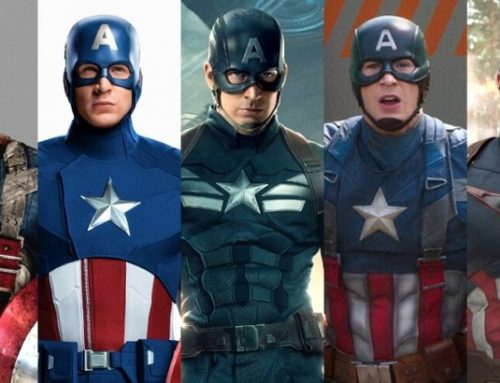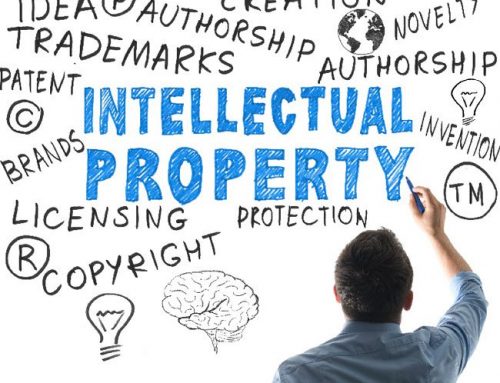Abraham Maslow’s famous “hierarchy of needs” places self-actualization as the pinnacle of human behavior. To illustrate what the phrase “self-actualization” meant , Maslow said:
“a musician must make music, an artist must paint, a poet must write, if they are to be ultimately at peace with themselves.”
Of course, the thing that is important to note about Maslow’s hierarchy is that physiological needs are at its base, i.e., a person’s basic needs must be met before  that person can reach self-actualization. In other words, “a guy’s gotta eat”!
that person can reach self-actualization. In other words, “a guy’s gotta eat”!
Maslow’s theories shed some light on the ongoing social debate on the Internet regarding whether musicians would continue to produce quality music if copyright as we know it were to be abolished. A different argument, though very related, is whether money motivates one to be creative.
One movement advocating such ideas is the “Free Culture Movement.” Another less extremist movement is Stanford professor, Lawrence Lessig’s “Creative Commons” group, which advocates modified forms of traditional license agreements as a social compromise to “reconcile creative freedom with marketplace competition.” Watch Lessig’s video, released today on TED, entitled “How creativity is being strangled by the law.” For another this interesting discussion, see the site Against Monopoly.
The underlying assumption of some of the parties involved in the debate, which is ostensibly grounded in the record and movie industry’s recent campaigns against infringers, is that all intellectual property should be free for the public to use without payment and that the antiquated copyright laws should be modified or abolished. In my opinion, this extremism ignores the foundation principle of Maslow’s hierarchy of needs, that in order to achieve self-actualization, an artist’s or musician’s base needs must be satisfied.
Proponents of the free culture movement observe that creativity survived many years without the structural form which copyright superimposed upon it. Indeed, it is often observed that the great works of Mozart were created without the existence of copyright laws. Don’t forget, however, that Mozart wrote many of his works while being employed by benefactors such as the Prince Archbishop of  Salzburg, Heironymus Colloredo and Emperor Joseph II of Vienna, names that are certainly not as prominent as Mozart’s. In fact, where would the world of the arts be without the billions of dollars that have been donated by benefactors such as J.P. Morgan, James Smithson, Bill & Melinda Gates, Andrew Carnegie, Henry Ford, John D. Rockefellar, just to name a select, if not elite, few. So, while it is true that “a musician must create music,” it is also true that a musician has to eat.
Salzburg, Heironymus Colloredo and Emperor Joseph II of Vienna, names that are certainly not as prominent as Mozart’s. In fact, where would the world of the arts be without the billions of dollars that have been donated by benefactors such as J.P. Morgan, James Smithson, Bill & Melinda Gates, Andrew Carnegie, Henry Ford, John D. Rockefellar, just to name a select, if not elite, few. So, while it is true that “a musician must create music,” it is also true that a musician has to eat.
Long before the existence of copyright laws, there was a strong relationship between money and the creation of arts and music, and it will be that way until we abolish our system of currency as we now know it. Walk around any great city and witness the existence of hundreds of pieces of commissioned artwork. Listen to the commissioned works of Mozart, Beethoven and other great composers, who existed at the hand of benefactors. Walk through the Museum of Modern Art and look at the works of art generously donated by J. P. Morgan and other benefactors. Whether it be a king or a record label, money benefits art. Creativity, like it or not, is often inspired by the almighty dollar, whether that is represented by paper currency or some other bartered for compensation which meets our base needs as human beings.
That’s not to say that people would not continue to make music or art if they were not compensated for it – they would. That is an entirely different question in my mind. People’s hobbies and past time activities are in a slightly different class than, say, the copyrighted works of Don Henley. If great singer-songwriters such as Henley could not make a living at playing music and writing songs, I would venture to bet that most of us would never had heard of The Eagles. Again, even a great musician has to eat. If the musician cannot meet his base needs doing what he loves to do, a musician will meet those needs some other way and, therefore, there would be less time to do what he loves to do. So don’t confuse the musings of the masses with the creations of the geniuses.
The only legitimate question remaining, then, is how should a musician get paid for the music he or she creates? How should the songwriter get paid for the songs he or she writes? The answer, in the United States, is by virtue of the rights created in the Constitution, Article 1, Section 8, Clause 8, which gives Congress the right:
the music he or she creates? How should the songwriter get paid for the songs he or she writes? The answer, in the United States, is by virtue of the rights created in the Constitution, Article 1, Section 8, Clause 8, which gives Congress the right:
To promote the Progress of Science and useful Arts, by securing for limited Times to Authors and Investors the exclusive Right to their respective Writings and Discoveries.
The portion of this Clause dealing with the arts is further codified in the various Copyright Acts and amendments thereto. In a nutshell, the Copyright Act creates a legal fiction, called intellectual property rights, which gives creators certain exclusive rights in their works, including the rights to produce copies, create derivative works, perform or display the work, and to sell and assign the works, among other things.
The laws in the U.S. are based loosely on English concepts and laws that date back to the 17th and 18th century, which were a direct result of the invention of the printing press. The first actual copyright law was the Statute of Anne, or the Copyright Act 1709. Thus, the concept of “copyright” is a three-hundred-year-old concept that has survived the evolution from printing press to piano rolls to digital media, and I have little doubt that it will continue to survive through the technological age, despite the rumblings of these groups.
As the law often does, it must evolve, albeit it ever so slowly, to encompass these new technologies. The good news is that the debate that is ongoing in the new virtual marketplace of idea will help us formulate new and improved amendments to the laws that will hopefully address the perceived dichotomy between the rights of free speech and free culture and those of the creators and owners of intellectual properties to receive just compensation for their efforts and investments.
In the end, this blog is my response to viewing Larry Lessig’s video, as I said, posted today on the TED website, entitled How creativity is being strangled by the law (See the link above). In it, Lessig harkens back to the days of Sousa when children sat on the porch and sang the songs of the day. Lessig told of how Sousa decried the advent of the phonorecord machine as the demise of creativity. He points out that in our current state ot technological advance, copyrights should be “democratized” because the new generation of children use copyrights to create something uniquely different, that is to say they use the copyrights of others as “tools of creativity” and “tools of speech.” Since every such usage requires a copy, the arguement continues, every such usage is presummed by the establishment to be an infringement of someone’s copyright. Lessig’s solution is that the creator should simply license the use of their creation for free in the instance of “non-commercial” usages, and retain the rights to exploit it commercially. He refers to this as the “Sousa Revival.”
My question to Professor Lessig is this: why does the fact that an entire generation of Internet downloaders who are using copyrighted material to create derivative works mean that the rights of copyright holders have to be abolished or even diminished? Why do the creative whims and urges of those who utilize other people’s copyrights to create different, derivative works supercede those of the people who created the original works? Why should they? Are the audiovisual images of a actor portraying Jesus Christ lipsyncing to an infringed copy of “I Will Survive” so creatively valuable as to supercede to the rights of Gloria Gaynor to distribute the original? (This creation is one of the examples in Lessig’s video presentation). Consider this carefully before you answer, as it is a slippery slope.
This brings me to another relevant observation: people would generally not want pay money to hear most children sitting on the porch singing their songs, unless that child happens to be a Don Henley protegee. That is the difference between most of the music ony MySpace, for example, and the music that is generally downloaded on iTunes. There is a tremendous difference in the value of the spontaneous, albeit creative, songs of a child and the intricate lyrics and melodies which are the product of a genius the likes of Don Henley. That is precisely why almost 100% of the product downloaded from Napster in the early days was product that had been recorded and marketed by major record labels. It had intrinsic value.
 Let me illustrate these principles with an example from the world of physical property. Person A has a piece of property populated with a lot of trees. Person B, owns the lot next door, which is flat and has a nice stream of water running around its perimeter. Person C comes along, see this situation and, overwhelmed with creativity, cuts down Person A’s trees and builds himself a house on Person B’s lot and claims it as his own. When Persons A and B confront him, stating that the law says he cannot do what he did, Person C responds that his creativity is being strangled by the law and, therefore, the law should be abolished. Is Person C making a good argument? Is Person C likely to prevail in court? No. Yet, this is the argument of the Free Culture Movement and, in some ways, of the Creative Commons.
Let me illustrate these principles with an example from the world of physical property. Person A has a piece of property populated with a lot of trees. Person B, owns the lot next door, which is flat and has a nice stream of water running around its perimeter. Person C comes along, see this situation and, overwhelmed with creativity, cuts down Person A’s trees and builds himself a house on Person B’s lot and claims it as his own. When Persons A and B confront him, stating that the law says he cannot do what he did, Person C responds that his creativity is being strangled by the law and, therefore, the law should be abolished. Is Person C making a good argument? Is Person C likely to prevail in court? No. Yet, this is the argument of the Free Culture Movement and, in some ways, of the Creative Commons.
Just as the law creates real and enforceable property rights for a person who owns a plot of real estate, the law creates intellectual property rights so that person can own an intellectual creation and enforce his rights to the exclusion of those who usurp it. Abolishing the one makes no more sense than abolishing the other. Abolishing the intellectual property right a person has in a copyright, therefore, devalues the creation.
Now, imagine that Person A’s lot was, instead, full of reeds and twigs and Person B’s lot was full of ravines, rocks and arid soil. Person C would never stop to take a second look! The barron options now before Person C would NOT inspire creativity in most people.
As further illustration of this principle of intrinsic value, ask yourself whether the Jesus video referred to earlier would be nearly as popular, nearly as creative, if the actor’s own singing voice had been used in place of Gloria Gaynor. The answer is probably no, because the reason that the video of Jesus Christ singing Gloria Gaynor’s “I Will Survive” is so popular is because it incorporates a copyright that already has intrinsic value and, therefore, adds additonal value to the video. The arguments of the free culture movements omit or overlook this concept of intrinsic value.
What I do like about Lawrence Lessig’s movement, Creative Commons, is that it is, in the final analysis, based on the principles of the Copyright Act, i.e., that the copyright has value and that its owner has certain exclusive rights, which he can assign to others. Lessig’s solution is essentially using existing copyright laws to create a unique license that attempts to strike a balance between fair use and full copyright reservation. In the end, however, the license are based on the rights already granted in The Copyright Act, proving that the copyright laws as they currently exist allow for the very thing that these groups seek. I cannot agree with him more in that respect.
Technorati Tags: Copyright Law , Digital Downloads , Free Culture Movement , Creative Commons , Lawrence Lessig , Mozart , Beethoven , Maslow
del.icio.us Tags: Copyright law , Digital Downloads , Free Culture Movement , Creative Commons , Lawrence Lessig , Mozart , Beethoven , Maslow , Record Labels
















